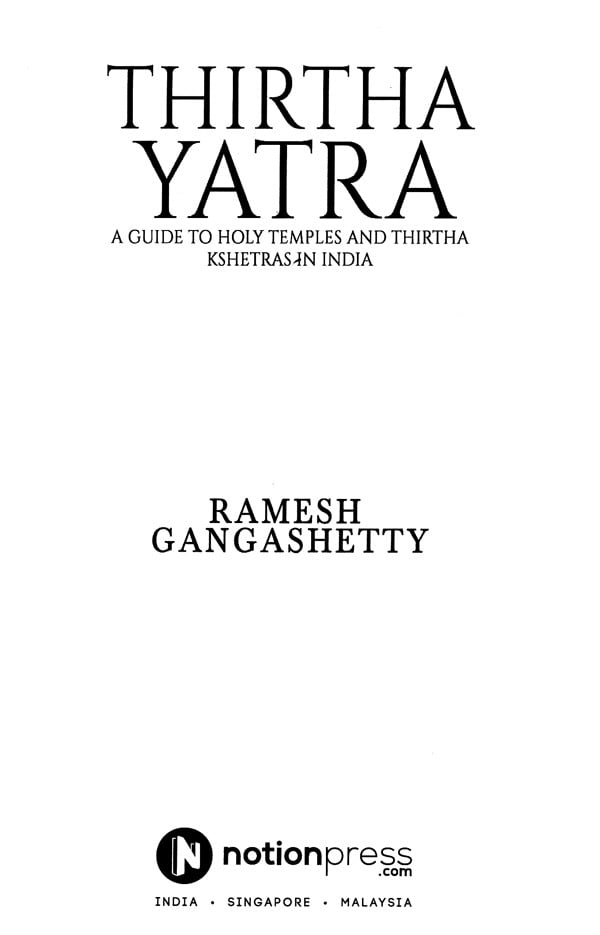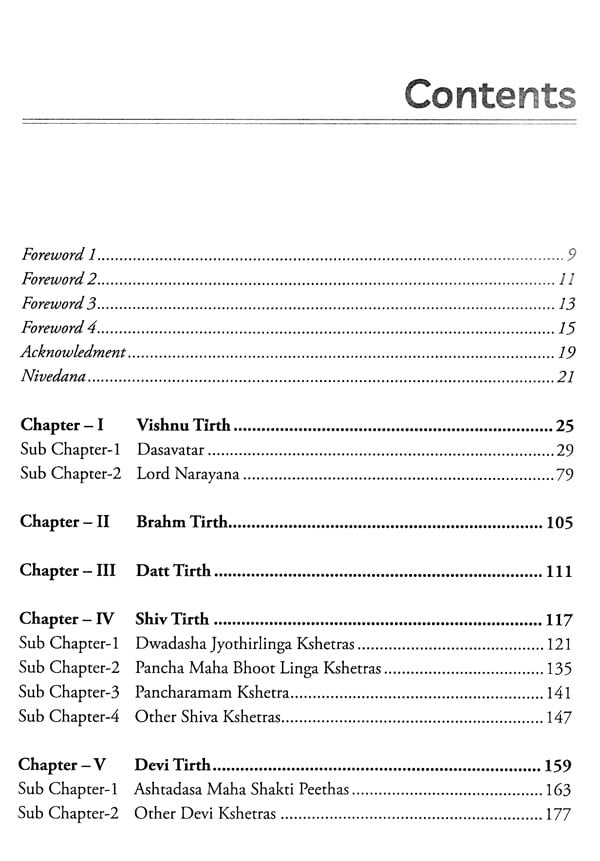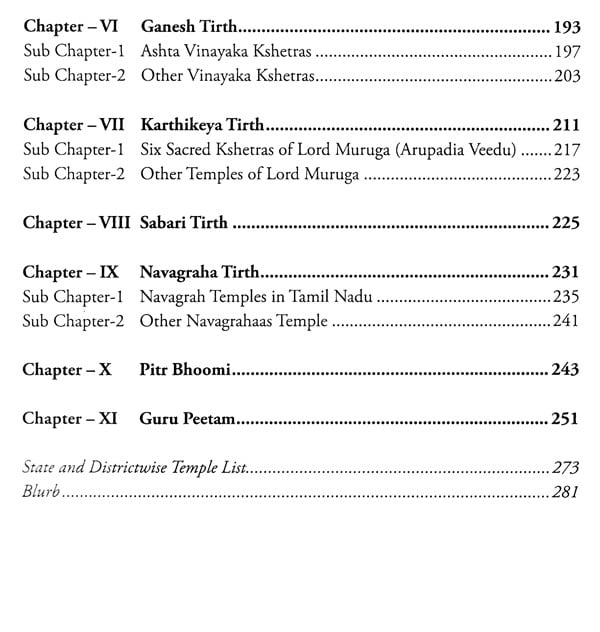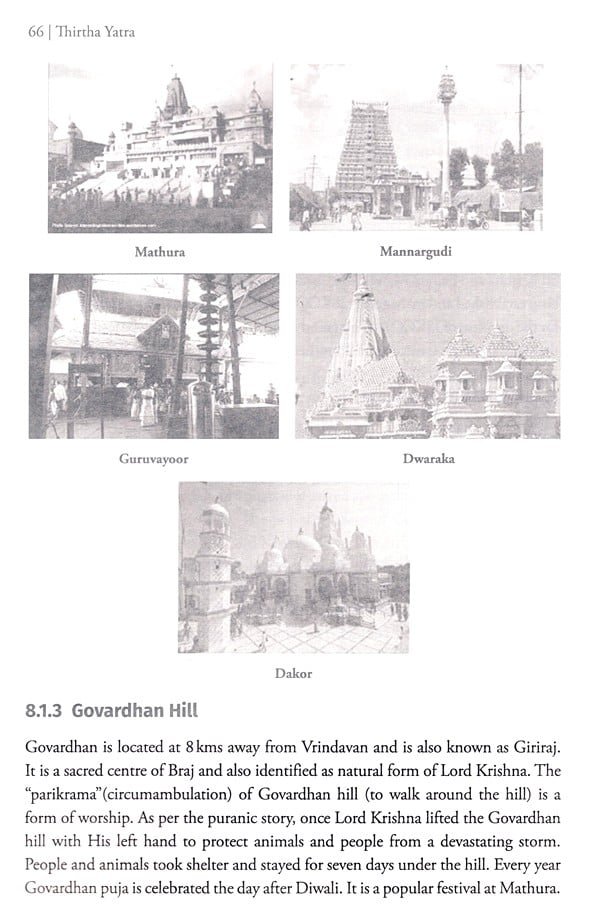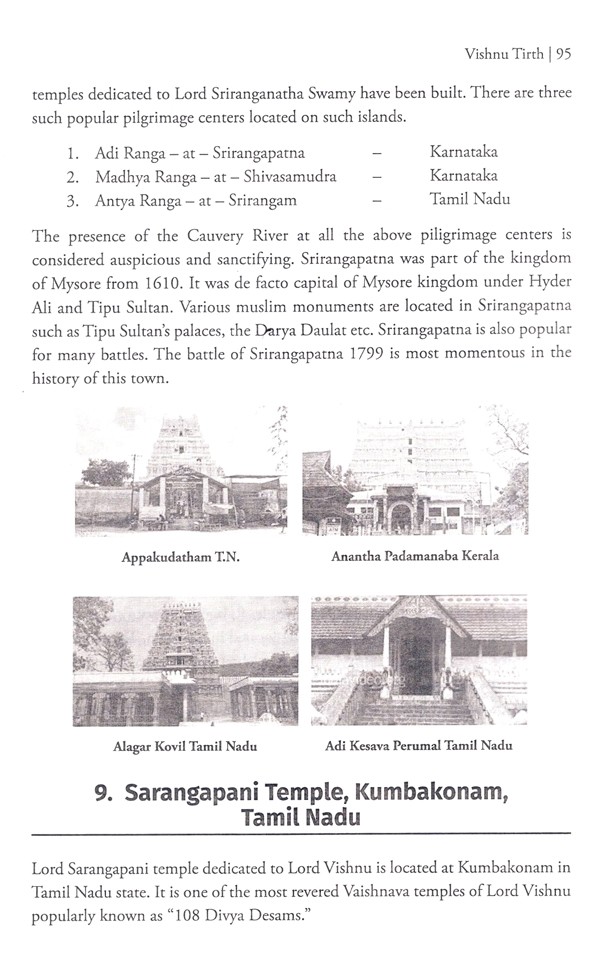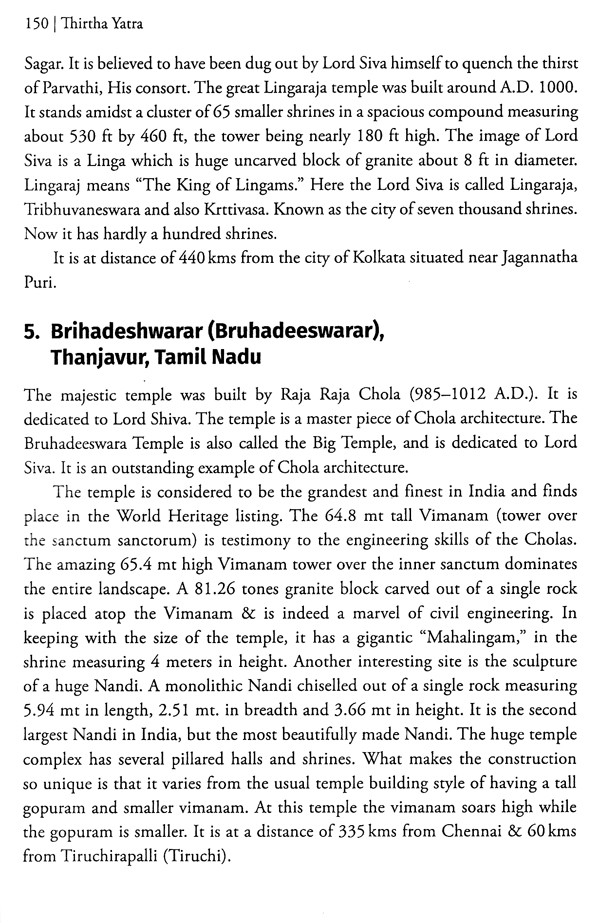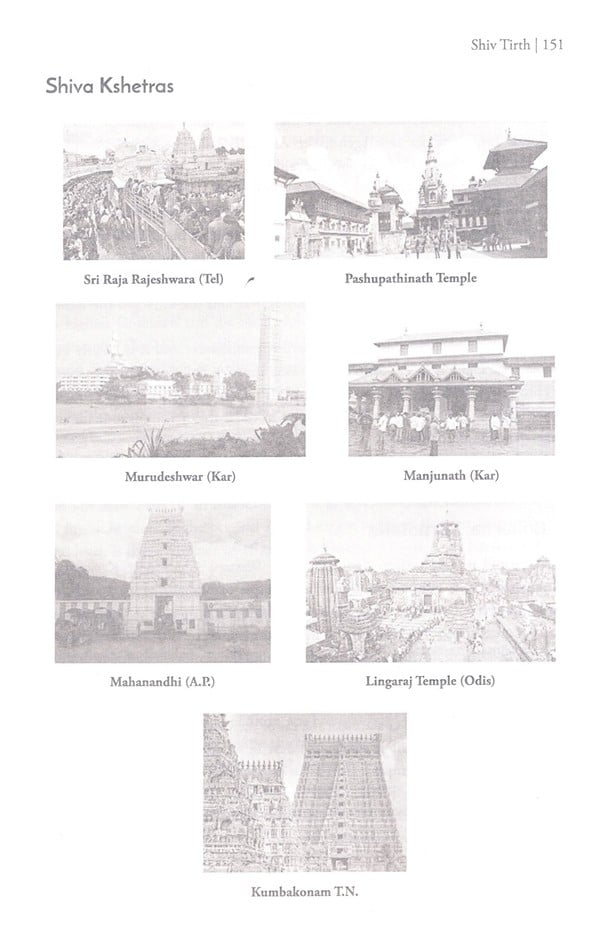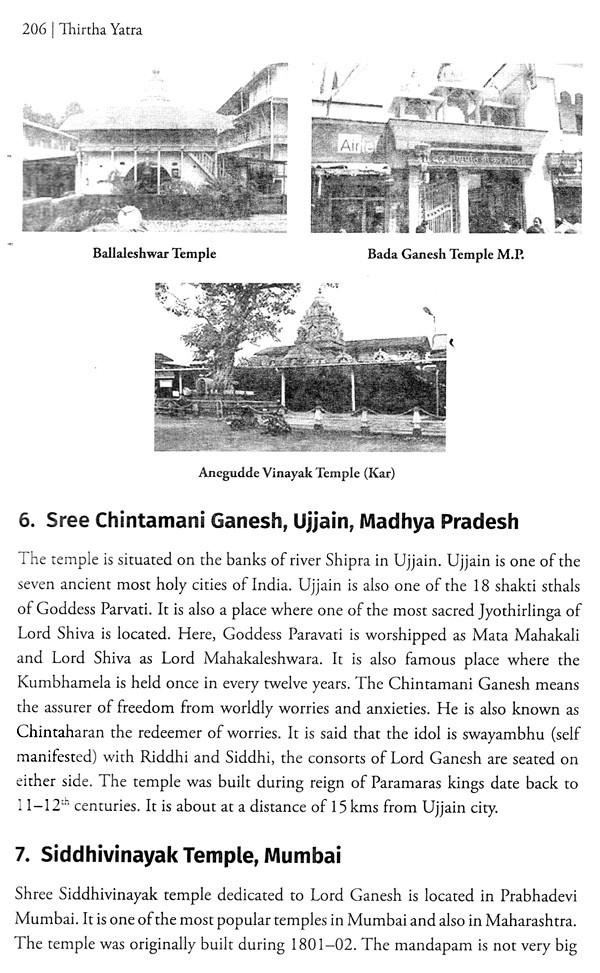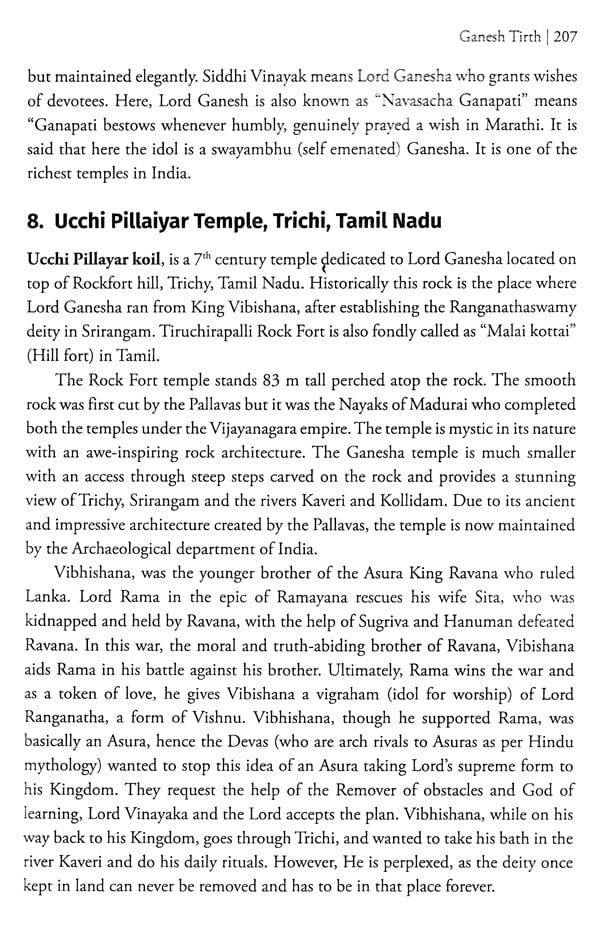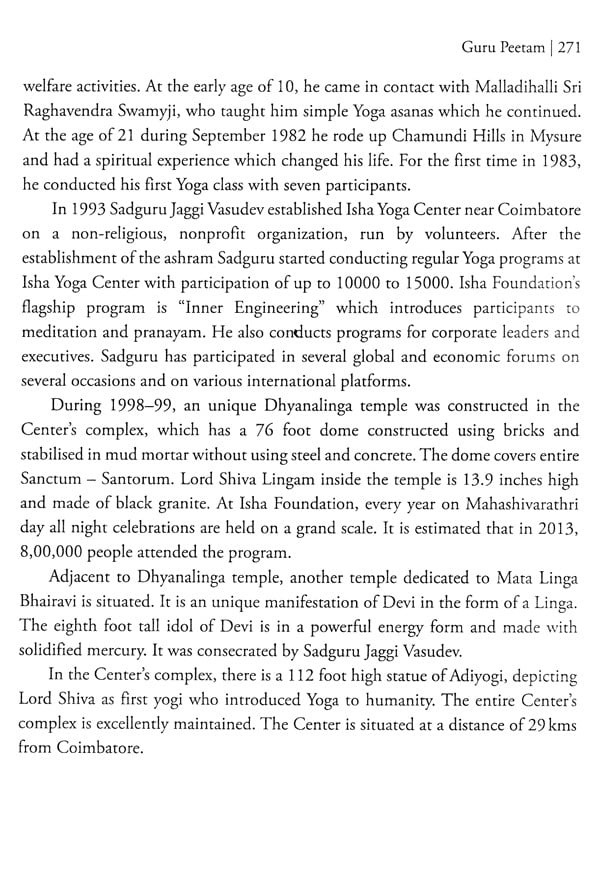
Thirtha Yatra: A Guide to Holy Temples and Thirtha Kshetras in India
Book Specification
| Item Code: | UBF208 |
| Author: | Ramesh Gangashetty |
| Publisher: | Notion Press |
| Language: | English |
| Edition: | 2019 |
| ISBN: | 9781684661336 |
| Pages: | 281 (Throughout B/w Illustrations) |
| Cover: | PAPERBACK |
| Other Details | 9.00 X 6.00 inch |
| Weight | 360 gm |
Book Description
India will just be a mere geography without its religious and spiritual ethos combined with moral values and civilization. If Bharat is known for its spiritual accomplishments and philosophical roots, one has to gratefully acknowledge the role played by its hallowed places of worship, holy rivers and magnificent mountain ranges which have inspired people for thousands of years. In particular, temples contributed in no small measure to Bharat's spiritual enlightenment, serving as a beacon to the rest of humanity.
Every temple in this holy land has a story to tell, a legend to elevate our spirits and is a sacred space for all of us to experience inner joy. One can find the contribution of so many saints and rishis who devoted their entire life to many places of worship. In olden days, temples served as a great center for enriching all facets of human life-be it spiritual training or yoga; be it education; be it poetry and literature; be it fine arts and sculpture.
There are thousands of fascinating temples, with great historical and spiritual backgrounds, spread all over the country. These temples can be divided into many groups, finding mention in innumerable scriptures. Which are they? Where are they located?
This book is an attempt to collect and curate and tabulate information in brief which will certainly answer some of the queries a prospective yatri may have. All the information in the book was collated after personal visits to these places by author.
Ramesh Gangashetty, (74) hails from Maharashtra and is settled in undivided Andhra Pradesh. He had been a banker all his life and after his retirement, he did not choose to relax at home. Instead, he chose to pursue an entirely different journey. This journey took him to various places of worship in every nook and corner of the country. The author has been quite selective and visited only those temples which can be grouped into different categories.
Ramesh is married and has three children who are well settled in life. He is not just a banker and traveler but also someone who developed a passion for cricket and represented Nagpur University in his youth.
Temples have played a stellar role in providing a spiritual platform to the Hindus. People thronged to temples not just for worship, but to avail the benefits they provided to the entire community in terms of all forms of art, architecture spiritual education and what not. There is a saying in regional languages that one should not reside in a village which does not have a temple. Every temple has a story, purana and legend associated with it.
There are millions of temples- some big, some medium and some small. But everything has one factor in common. That is idol worship. One may ask why should anyone need to worship an idol and God cannot be embodied into a wood, stone or metal icon. True. In the previous yugas our ancestors and rishis did not need temples because everyone took to self- realisation and was content with an abstract concept of God. It is not possible in Kaliyuga and we need to have a concrete shape for God whom we can worship and relate ourselves since we can no longer retire to forests for meditation and penance. This gave scope for the concept of Archa Avatara which in academic language would mean anthropomorphic images.
So, we started giving a form to the formless God according to our own imagination. Then came the Agamas to invoke the spirit of God through Praana Pratishta which distinguished such sanctified idols from ordinary ones that can found anywhere. The beauty of Hinduism is that it allowed each one to have his/ her own Ishta Devata according to one's own temperament and upbringing.
Since it not possible for anyone to visit all these millions of temples, temples were identified in different categories- like abodes for Vishnu, Siva, Ganapati, Sakti,Shanmuga etc so that devotees can have the choice.
**Contents and Sample Pages**
